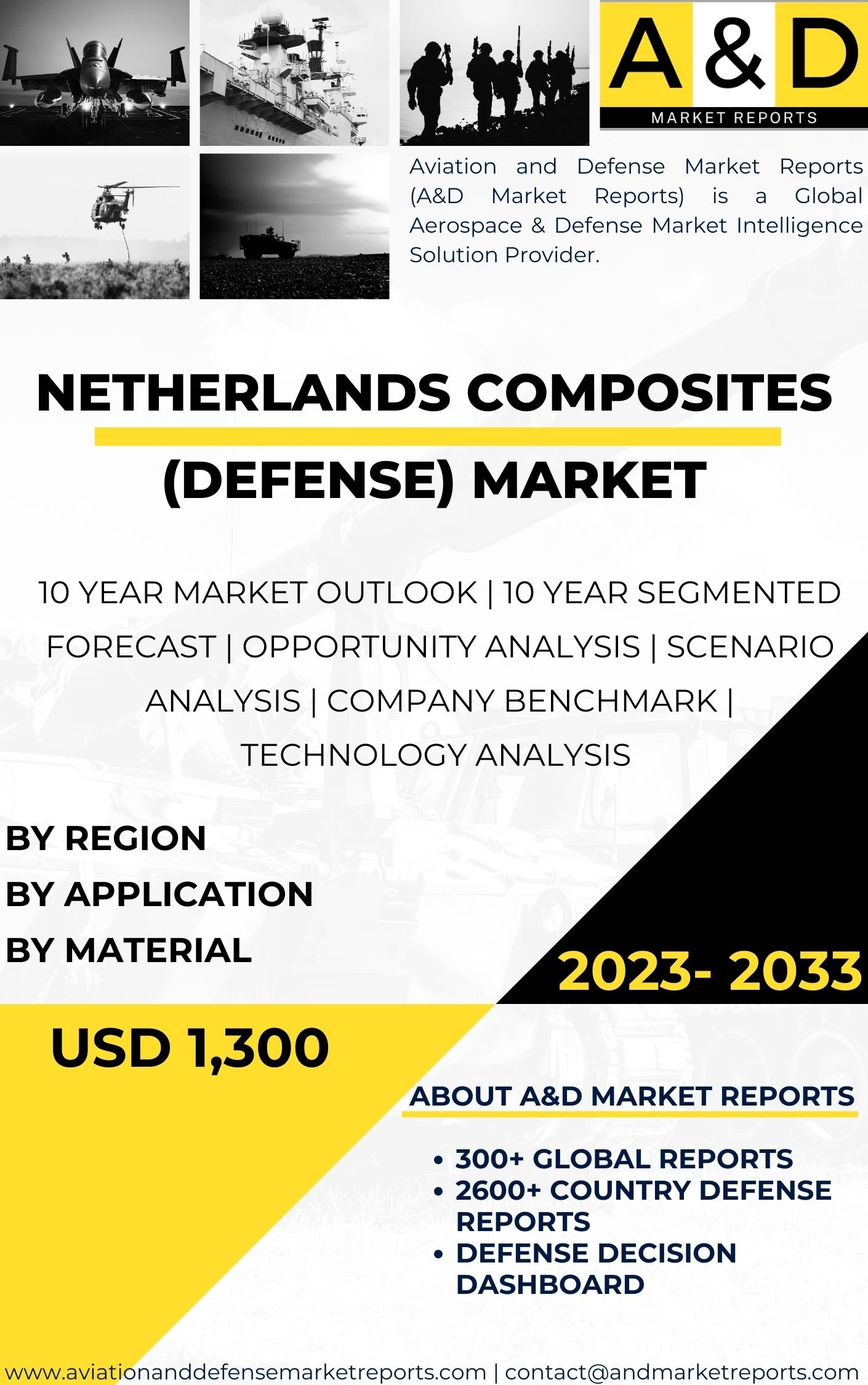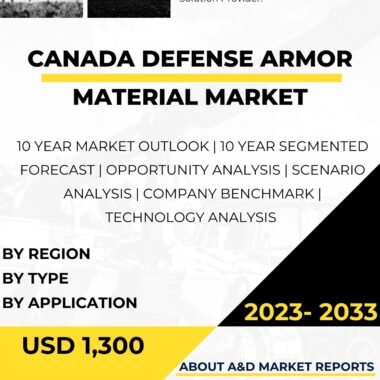Description
The Netherlands Composites (Defense) market has experienced substantial growth and innovation, reflecting the country’s commitment to leveraging advanced materials for enhancing its defense capabilities. Composites, also known as composite materials, are engineered materials composed of two or more constituent materials with distinct properties. The combination of these materials results in a final product that offers superior strength, durability, and lightweight characteristics, making composites highly desirable in the defense sector.
As a technologically advanced nation and a key player in the European defense community, the Netherlands has recognized the strategic value of composites in modernizing its defense infrastructure. Composites have found extensive applications in various defense systems, including aircraft, naval vessels, armored vehicles, and soldier equipment. The incorporation of composites allows the Dutch Armed Forces to achieve operational efficiency, reduced fuel consumption, and improved overall performance, contributing to their operational effectiveness.
The Dutch defense industry has been actively engaged in the development and utilization of composites to meet the specific requirements of defense platforms. Companies specializing in composites research, manufacturing, and engineering have emerged, fostering indigenous expertise and innovative solutions. The Netherlands’ focus on developing domestic capabilities in composites not only strengthens its defense industrial base but also creates export opportunities for defense-related composite materials and technologies.
In the aerospace sector, composites have been extensively used in the manufacturing of military aircraft. The Netherlands, through collaborations with international aerospace companies, has contributed to the production of composite components for fighter jets and unmanned aerial vehicles (UAVs). These composite materials offer a higher strength-to-weight ratio than traditional materials like metals, allowing for more efficient aircraft designs and enhanced fuel economy.
Naval vessels have also witnessed the integration of composites in their construction and design. The lightweight properties of composites contribute to reduced vessel weight, increasing buoyancy, and fuel efficiency. Additionally, composites exhibit high resistance to corrosion, making them well-suited for maritime environments. In the Netherlands, naval shipbuilders have incorporated composite materials in various components, such as superstructures, hulls, and radomes, improving overall vessel performance and extending operational life.
Armored vehicles used by the Dutch Army have also benefited from the integration of composites. In military applications, the use of composites in armor plating provides increased protection against ballistic threats while maintaining a manageable weight. This allows for more agile and mobile armored vehicles capable of rapid response in diverse terrains.
In the domain of soldier equipment, composites have revolutionized the development of personal protective gear. Helmets, body armor, and other gear made from composite materials offer enhanced protection while being significantly lighter and more comfortable for soldiers to wear. These advancements contribute to improved soldier mobility and overall combat readiness.
The Netherlands’ participation in international defense collaborations and NATO missions has further increased the demand for advanced composite materials. The ability to contribute to multinational defense initiatives and meet international standards for material performance and safety enhances the country’s credibility and strengthens its position in the global defense market.
The Netherlands Composites (Defense) market is not only focused on traditional defense applications but also extends to research and development for future defense technologies. The country actively invests in advanced composite research, exploring cutting-edge materials and manufacturing techniques that could revolutionize defense systems in the future. Concepts such as self-healing composites, smart materials, and nanocomposites are being explored to improve the resilience and adaptability of defense platforms.
The increasing use of composites in the defense sector has also raised the importance of ensuring supply chain security. The Netherlands prioritizes measures to safeguard the supply of critical composite materials and components, reducing dependence on foreign suppliers and mitigating potential risks to its defense programs.
Additionally, sustainability considerations play an essential role in the Netherlands Composites (Defense) market. Efforts are being made to develop environmentally friendly composites that minimize environmental impact while maintaining high performance. Sustainable composites offer the potential for reducing the carbon footprint of defense systems, aligning with the country’s broader commitments to environmental protection and climate change mitigation.
Challenges in the Netherlands Composites (Defense) market include the need for continuous research and development to stay at the forefront of composite technology. The defense industry’s fast-paced advancements demand constant innovation to maintain a competitive edge in the global market. Ensuring the cost-effectiveness of composite materials also requires careful consideration, especially for large-scale defense projects.
In conclusion, the Netherlands Composites (Defense) market has witnessed remarkable growth and technological advancements, fueled by the country’s commitment to modernizing its defense capabilities and embracing innovative materials. Composites offer numerous advantages in terms of strength, durability, and lightweight properties, making them highly sought after in the design and construction of defense systems. Through collaborations with domestic and international partners, investments in research and development, and a focus on sustainability and supply chain security, the Netherlands continues to position itself as a significant player in the global composites market for defense applications. As the country looks to the future, advancements in composites technology hold the promise of further enhancing defense systems, ensuring the Dutch Armed Forces remain prepared and effective in meeting the challenges of a rapidly evolving security landscape.




